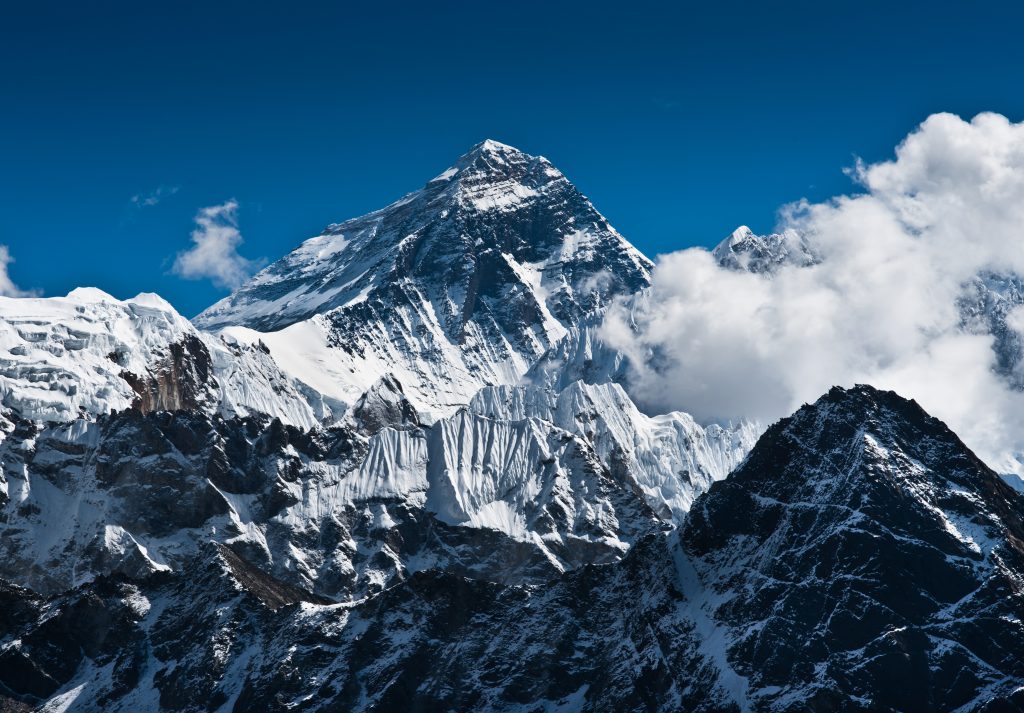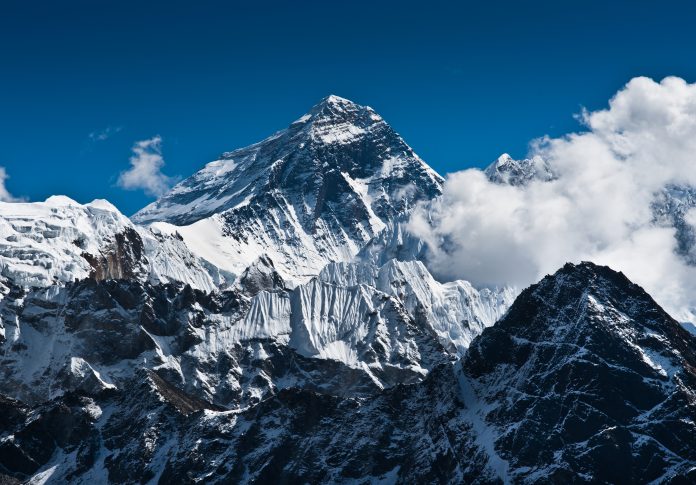Yes, and so can everyone if they train well and prepare correctly. People have reached the moon and achieved the impossible, all because they wanted to do so. The fact that you are here reading this blog means you want to do the Ebc trek too. You just want to be sure whether you have it in you, and believe us, you do!

If you can think of it, you can do it! EBC is a moderately difficult trek that needs some bits of preparation and, of course, careful planning. The physical practice is something that you can do for the planning bit- leave it to us, and we’ll have it done for you.
You see, people have various reasons behind why they want to trek to the EBC. For some, it is a stepping stone toward the Everest Summit Expedition; for some, it is a one-off adventure, while others just love trekking. You see, the Everest Base Camp is at 5,364m. The views you get from here, even the route you take to reach there, make for a once-in-the-lifetime experience.
Earlier, we had written a blog comparing the trek routes through Namche Bazaar and Gokyo-Ri. You can give it a read sometime later. But for now, let’s get some basics right about the EBC trek so that you can make an informed decision later.
How long and how much will I have to trek?
EBC Trek is one of the most famous treks in Asia. This trek wasn’t as explored a decade or half ago. However, recently, the influx of tourists/trekkers has been huge. While this ensures that the trek becomes more human-friendly, it comes with its downside too. Anyway, to begin with, let us look at how long the trek is and how much walking time it requires.
Distance
The distance varies depending upon whether you trek through Namche Bazaar or Gokyo-Ri. Gokyo-Ri is famous for its scenic beauty, but it’s usually long, and the terrain is tougher.
Hence, the Namche Bazaar route is the more popular one. Let’s talk about that here. Including the rest days, the trek lasts between 12-14 days and covers a 130km roundtrip that starts from Lukla.

On average, the daily distance covered comes to be around 13-16km. However, you don’t trek the entire distance in one go. It is broken into several bite-sized treks so that you can not just enjoy it without getting tired but also get acclimatized with the terrain and the altitude.
Walking times
We gave the distance in the section above; it is also important to mention that you don’t have to be overwhelmed by the number of kilometers. Your trek would be for roughly 8 hours a day. A part of these 8 hours would be devoted to you resting and relaxing on the way.
Will I be able to manage the Terrain, elevation, and altitude?
As we mentioned before and in other blogs, the EBC Trek is a moderately difficult one. You have to be physically fit and train well for the trek. You cannot expect to take the trek leisurely because it isn’t your usual walk across the park. You are trekking to the base of the mighty Mount Everest; you can only assume that the trek will be anything but easy. Let us now try and answer your question in detail.
Terrain
The Everest Base camp trek graduates from the alpine surroundings at the end of the Sagarmatha National Park to the ridges of ancient moraines. The initial stretch of the trek is easier in terms of the terrain. There are constant steep inclines during the entire trek route – especially towards the 2nd half of the day. The path is covered with beautiful pine and ironwood forests. It gets muddy when wet, but enough rocks wedged into the ground make the trek easy to cover. There are decently sturdy suspension bridges as well when it comes to crossing the rivers.
However, as you get closer to the end of the trek, the forest cover reduces significantly, and you will get exposed to direct and super bright sunlight. Hence, it is important to take sunscreen handy. Also, if you are someone with sunburn issues, please keep an SPF 50+ Sunscreen.
Elevation and altitude
This is the part that makes one of the most difficult bits of the entire trek. Everest Base Camp is located at a height of 5,364m. Of this, 2,865m will be covered when you take the flight from Kathmandu to Lukla.

The rest needs to be trekked. You see, less than 2/3rd of the altitude needs to be covered now – you can manage that, right? When you trek to Namche Bazaar, you will gain roughly 549m. While we may have made it sound easy breezy, a lot of people do tend to suffer from Acute Mountain Sickness (AMS) at such heights. For this reason, two days are given specifically for acclimatization so that you may adjust to the altitude. Now, in case you think that you would be sleeping and resting on these days- well, not really. There will be some practice trekking sessions that will be done to ensure that your momentum isn’t lost.
At TrekNomads, we also ensure that requisite medical facilities are available so that in case someone gets sick, they are attended to adequately. Also, drinking water in adequate quantities will prevent the onset of AMS.
Any Food Related concerns for me?
If you are someone who expects a feast on a trek- well, your expectations won’t be fulfilled. However, if you love good food- well, you are in for a treat. You will be treated to protein-rich and super nutritious (but also yummy) food. Let us have a look at all that you will get to eat.
- Dal Bhaat: The most popular meal and a local delicacy, Dal Bhaat comprises a warm-spicy lentil stew served with rice and chapati. Bhaat is essentially rice. However, it isn’t your usual basmati or the likes, the rice is locally sourced, so you will be able to feel the local flavour quite distinctively.

- Egg and Fries: for the very obvious reason that Eggs are a rich source of protein and give enough energy and keep you full for longer. Fried potatoes do not have any nutritional value per se, but they can keep you full for long treks. Mostly, the vegetarian trekkers go for mashed potatoes or fries for this reason. Many trekkers also go for a double egg omelette, and you can try that.
- Shyakpa or Sherpa Stew: A vegetarian delicacy, it is a broth made with potatoes, carrots, and other root vegetables. Extremely healthy, light on calories, but extremely filling- this stew is made for the ones who want to maintain a strict calorie counted diet. There is a non vegetarian variant of this dish too.
- Pizza: Took you by surprise, didn’t we? Do try out the local Pizzas- you’ll love them. However, at higher altitudes, it would be tough to digest. So avoid after Namche Bazaar.
Is the Accommodation Well suited for me?
At TrekNomads, we can say for a fact that you would love the accommodations. We believe in comfort and sustainable luxury – no matter where we are, and the same gets replicated for the EBC Trek accommodation too.
For instance, the TeaHouses we choose to stay at are more than just your average bread and breakfast joints. They are clean and comfortable and have almost all the necessary amenities you may require to rest well while on the trek. The minimally decorated rooms have single windows, low-rise beds, and comfortable foam mattress pads.We could have also mentioned all of this on a very generic note. However, sometimes we feel that it makes sense to be specific and promote ourselves.
You can contact us to know more about the accommodations here.
What gear and equipment should I pack?
We have a dedicated blog that mentions the equipment you need to pack to ensure a good haul on the EBC Trek. You can visit the blog here. However, for easy reference, we are also listing some major details here:
- Understand that there are strict limits on the weight you can carry from Kathmandu to Lukla on a flight and the weight that the porter would carry for you. As a general rule, stick to no more than 10-15kgs in your main pack with a small 30-liter day pack to carry yourself on the side.
- Go for a four-layered dressing ensemble to keep you warm at the high altitudes. And make sure you include waterproof clothing as it can rain anytime.
- All the standard gears would be required for the trek, with a special emphasis on good boots, a sturdy hiking pole, a sun hat, a headlamp, and strong sweat-resistant sunscreen.
Let’s talk Pricing.
The EBC Trek is the epitome of natural beauty – and that too. However, as we mentioned above, the trek is moderately difficult; hence, arrangements must be made for a happy trek you can enjoy. Now, this comes at a price that is not necessarily less. An average EBC Trek starts at INR 75K+. It includes the arrangement for your accommodation for those 12-14 days, and many other things. For details, you can get in touch with us. Or explore yourself.
Is it worth it for me?
Having laid down the essentials (pricing included), let’s address the elephant in the room. Is all of this worth it for you? Well, let us try and answer the same below in a couple of quirky questions:
- Do you love being alone with yourself, lost in your thoughts as you admire the picturesque beauty around OR, in other words, have you ever felt the need to be in peaceful surroundings?
- Have you ever thought of going for a good trek and probably continuing the same?
- Do you want to do something different and unusual with your life? Something that most people wouldn’t do?
- Do you think you have enough dedication that you can prepare for the trek dedicatedly?
- Do you think that you want to push your limits?
If the answer to all of these questions was a Yes, then YES – YOU CAN DO THE EBC TREK!
So dear nomads – this was it from our side this time. If you need to ask anything or explore the EBC Trek more before deciding, feel free to reach out to us. We are always here for you.

[…] Ebc trek is a moderately difficult trek that needs some bits of preparation and, of course, careful planning. […]